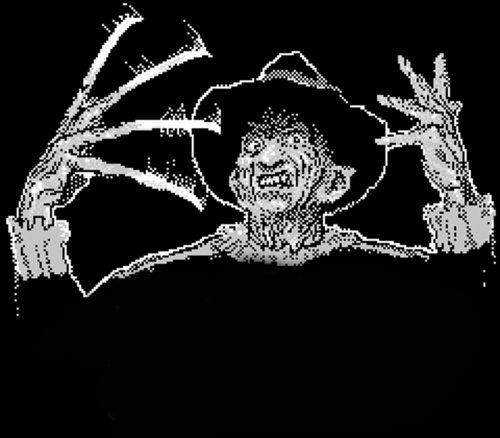I really loved that first Saw flick, so I jumped at the chance to talk to the guys behind it. Insidious is flawed, with a ton of startle horror, but at it’s core has great practical effects and filmmaking techniques. It’s the most fun I’ve had at a big horror flick since The Descent.
Like most revolutionary horror franchises that push past the boundaries of a trilogy (and even moreso the ones you can’t count on both hands anymore), people forget just how groundbreaking they were. Certainly Saw will be remembered alongside Friday the 13th and Nightmare On Elm Street, but where those franchises fell to camp, Saw fell to blood. Giving rise to a slew of “torture porn†pretenders that peaked last year with the fascinatingly abominable A Serbian Film, Saw was a revelation in a stagnant genre. Somewhere along the way, however, the focus became the gore and blood, the two least frightening parts of Saw. The creative team behind the revolution, screenwriter Leigh Whannell and James Wan attempt to capture the riveting psychological horror that set Saw apart with their latest film, Insidious.
“I think that’s partially what I want to prove with Insidious is that it’s possible to make a scary movie without blood and guts,†says Wan. With his partner Whannell, Wan has crafted a horror film that is mindful of convention, but aggressive in it’s subversion of those tropes The story of a young boy’s mystery coma and the spiritual infestation at the root of it pulls the very best of Poltergeist into the the modern shell of The Ring caliber art direction and bowstring suspense. He claims the Saw sequels missed the true horror core of it’s origin. The fear in Saw never came the blood, but the simple query “do you want to play a gameâ€; the use of a bandsaw to cut off a limb was never near as scary as the threat of it’s presence. “There was scary things in the first Saw film that people now forget. All they can remember now is all the traps and the blood and guts of the sequels. That was never the focus of the film. I wanted to go back and do something that was scary again, but without all the trappings of what Saw had.â€
That the partnership between Whannell and Wan that started in film school is obvious. The academic attention to horror detail and history is plain in Insidious, and is in some sense a return to Hitchcockian suspense techniques and tone seen in Saw. Starring Patrick Wilson (Watchmen, Hard Candy) and Rose Byrne (Damages, 28 Weeks Later) as the doting parents who must contend with the cleverly realized spirits harassing their family, Insidious is as inventive and flawed as their previous work. From the brilliant throwback title card to the daring sequences of terror in broad daylight, Insidious plays fast and loose with hackneyed horror. “We want you to be uncomfortable in all scenarios. We don’t want you to take a breather when morning comes,†says Whannell. “You know a film is good when it has you scared in the daytime.†While one horror trope Insidious does not eschew is tripping on the hem of it’s dialogue, it’s effectively plotted, it’s startle-moments and aural stingers balancing nicely with eye-popping fever dream art direction.
Working with a budget even less than that of Saw, Insidious flaunts ever dollar on screen, becoming the best major horror production since The Descent graced screens. Wan and Whannell claim the restrictions enabled that success. “Leigh and I wanted this to be a low budget film. This is way smaller than Saw, and Saw was small. I actually find that when you have a finite amount of tools and toys and budget to play around with you actually make a scarier film,†says Wan. Whannell adds, “The difference I saw with James is that with Saw, he was frustrated with the lack of budget because it was preventing him from getting all these shots he had in his head for years. On the set of Insidious, he was reveling in it. He was reveling in the spirit of the thing. I think he was sick of development hell. I think that instilled in James a sense of ‘I just wanna go and shoot something!†It’s an adventurous attitude that bleeds into the film. “So instead of saying ‘oh man, I can’t believe we can’t get that crane shot’, you’re just like, fuck it. Let’s just grab the camera and do it.â€
He continues, laughing. “Film school. Film school spirit.â€
Comments Off on Interview – Leigh Wannell/James Wan of Insidious/Saw